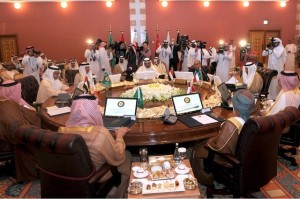by Henry Johnson
The Houthis’ advance through much of Yemen has defied most expectations. Even those powers most strongly invested in the country’s future misjudged the group. Leading the pack is Saudi Arabia, whose air campaign—meant to germinate an effective coalition of adversaries—has backfired, as the Houthis gained further ground. The other major power pegged to this conflict, Iran, likewise failed to grasp the full potential of the Houthis. U.S. officials divulged that Iran had advised the Houthis against seizing the nation’s capital, Sana’a. This leak, while confirming that Iran does not control the Houthis, demonstrates that Iran too miscalculated the ease with which the militia could sweep through the country.
How did a single group from the remote and impoverished northwestern tip of the country manage to blaze such a penetrating trail? An urge to overestimate the importance of sectarian identity likely lies at the fault of such misunderstandings. Instead, much of the civil strife has to do with the consequences of the 2011 Arab uprisings, which forced—temporarily—the country’s long-standing dictator, Ali Abdullah Saleh, out of power. The upwelling of protests gave his internal rivals the confidence to turn on him, fracturing elite consensus in the process. In the vacuum that followed, regional powers and the U.S. decided upon a moderate, but somewhat unknown candidate, Mansur Hadi, for president.
President Hadi’s lack of either a tribal or military power base forced him to balance between competing factions but, in the end, left him defenseless. Hadi’s troubles were compounded by the fact the Yemeni presidency does not in and of itself confer legitimacy upon the officeholder. Recognizing that other northern tribes would not fight them for the sake of a president whom they also distrusted, the Houthis took advantage of the situation. In September 2014, they rolled into the nation’s capital, brushing aside a weak and fragmented central government in a seemingly uninterrupted chain of victories.
The Problem of Sect
According to the scholar Abdullah Hamiddadin, regional identities and tribal politics have fueled the Houthis success. Sect, on the other hand, has not determined whether a Yemeni group will come out in support or opposition of the Houthi advance. It is secondary to the regional and tribal position toward the conflict. Outside powers cannot persuade Yemenis of one position or the other on the basis of their sect, although casting the conflict in sectarian terms may indeed serve their broader agenda.
At an event put on by the Carnegie Middle East Center, Hamiddadin illustrated the problems of using a sectarian paradigm to understand the events in Yemen. He explained that for the wars of the Middle East to be truly sectarian, one would have to assume “that to be a Sunni anywhere in the world means that you have political interests derived from Sunnism, which converge with the political interests of somebody else in another country and that would create some kind of alliance between those various Sunnis.” Recent warfare between the Islamic State and Jabhat al-Nusra, two organizations with similar theologies, quickly belies a deterministic sectarian explanation.
Hamiddadin challenged, furthermore, the notion that Zaydism fits neatly within the Shia-Sunni dichotomy. Zaydis share the belief with most Shia from Iraq and Iran that leadership of the Islamic caliphate belongs to descendants of the Prophet’s family, but they disagree on whom they count as imams and follow a different theological and jurisprudential system. Zaydis have long coexisted with their Sunni neighbors in Yemen and have represented their religion as a fifth school of Sunni legal thought rather than as a distinct sect. The Houthis also don’t put their Zaydi identity at the forefront of their organization. According to Hamiddadin, the Houthis “have a way of thinking and they believe that way of thinking should be spread, but they avoid imposing it and they try to avoid being labeled as Zaydis. They like to be seen as a national movement that incorporates everybody, even Salafis, some of whom are allied with them in some areas.”
The march on Sana’a and Aden by the Houthis represents not an attempt to impose some sort of Iranian-style government on the country, but a reassertion of power by a marginalized, peripheral elite. In fact, reestablishing a Zaydi imamate in the country would seriously depart from modern Zaydi theology. The forebears of the Houthi movement, including its namesake, declared the Zaydi imamate defunct and forsook the doctrine of khuruj, which justifies the rebellion against an unjust political regime by a Zaydi elite. Rather than usurping central authority, the Houthi leadership is probably more interested in eliminating opponents and securing a position in the next political order proportional to its social and military importance.
Rise of the Houthis
Before the 2011 Arab uprisings, the government of Yemen had sponsored six years of Salafi-aided fighting against the politicized Zaydi tribes aligned with the Houthis. Ali Muhsin al-Ahmar, a military commander with strong Salafi leanings, spearheaded the anti-Houthi campaigns from 2004 to 2010. General Muhsin reportedly provoked the initial hostilities and recruited extremist Salafis into the fight against Zaydi “apostates.” The Houthis have run General Muhsin out of the country, overcome his loyal army units, and dissolved the tribal bonds that held his favored Islamist coalition, Islah, together. Beyond the elimination of its adversaries, the Houthis lack a clear political program. In light of their undeveloped political platform, it’s not a stretch to believe that one day they will cede power back to a central government, albeit a much more friendly one. Indeed, the Houthis will be attending UN peace talks in mid-June with the government-in-exile.
The Saudi intervention, instead of inspiring a united Sunni resistance against the Houthis, has rallied previously neutral tribes in the North to support the Houthis, if only in order to repel a destructive foreign power. For the Saudis to develop a viable exit strategy from their air campaign in Yemen, they will need to exploit divisions in the loose coalition of tribes that currently support or acquiesce to the Houthis. As a starting point, the Saudis must halt their bombing campaign and gradually reduce the hatred they now evoke in the North for their aggressive, sometimes indiscriminate use of U.S. military hardware. This should inspire hope for the upcoming UN peace talks. Hamiddadin pointed to some realpolitik from the Saudis, who understand that the Houthis are a fact they cannot overlook. He paraphrased Saudi diplomats as saying “the Houthis have to be part of a political solution, but not the way they wanted to be.”
Then again, however, the young prince in charge of the Saudi-led campaign may fail to see the finer contours of this conflict. Mohammed bin Salman is under a number of geopolitical spells to flex Saudi might at the moment: to prove the country’s uncontested dominance over the Arabian Peninsula, to show the Iranians the Saudi will to use overwhelming military force under dubious circumstances, and to pose as the defender of Sunnis. The U.S. cannot hope to mitigate instability in the Middle East if it does not start by taking the more difficult path in its relations with increasingly erratic allies.
Photo: Ali Muhsin al-Ahmar





